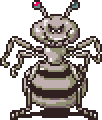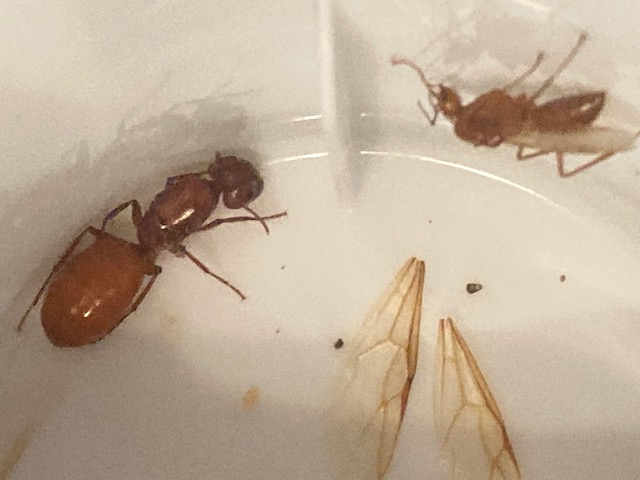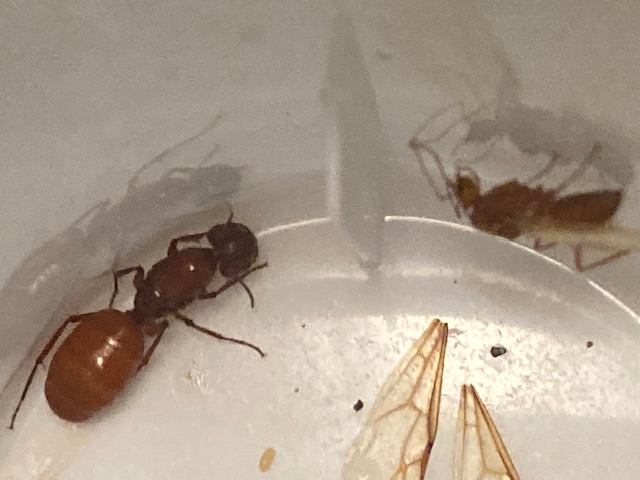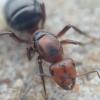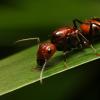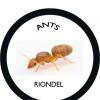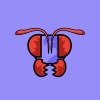1. Location (on a map) of collection: Newark, Delaware
2. Date of collection: May 24, 2024
3. Habitat of collection: inside office building
4. Length (from head to gaster): don't know, but she's about the size of a Camponotus queen
5. Color, hue, pattern and texture: reddish brown
6. Distinguishing characteristics:
7. Distinguishing behavior:
8. Nest description:
9. Nuptial flight time and date:
Found a reddish brown queen (I believe it to be a type of Camponotus?) in my office building on my way out of work on Friday before the Memorial Day weekend. She still had her wings on, but there were no other ants around, so I can only assume that she did her nuptial flight, landed, wandered into the building and then I found her. I put her in a plastic cup on my kitchen counter and was busy with other things. Then, the next day, I was going back into my house after mowing the lawn and I saw what I thought was a male of her "same" species resting on my doorway, still with wings on. I put him in the same cup as well. Upon first entering the cup, both ants "sniffed" each other with their antennae and then they did the swapping of food with each other from their social stomachs. I closed the cup and did other things.
48 hours later, the male was still alive and kicking, the female had lost her wings, and I believe I found an egg on the bottom of the cup (see photos). I put the male back outside and moved the queen and her egg into a test tube. Now I have MANY questions!
1.) What is the ID of the queen? (duh!)
2.) Do ants of different species swap food from their social stomachs with each other? Or does that only happen amongst ants of the same species?
3.) Do ants have to be airborne to mate?
4.) If the female was initially unmated and I put the male and female together in the cup (assuming they are both the same species) could they then "mate on the ground"?
5.) If I put the male outside again (after a [possible] mating with the queen in the cup) would he have the sperm/energy left to fly again and find another queen and do another mating?
Thanks in advance for answering my questions!


